Ocean Beach Airfield
In the 1910s, the Christofferson brothers flew high in San Francisco before tragedies brought them down.

Until June 14, 2026, the always-excellent SFO Museum has an exhibition on aviation at the 1915 Panama-Pacific International Exposition (PPIE), a fair which was staged in what is today the Marina District.
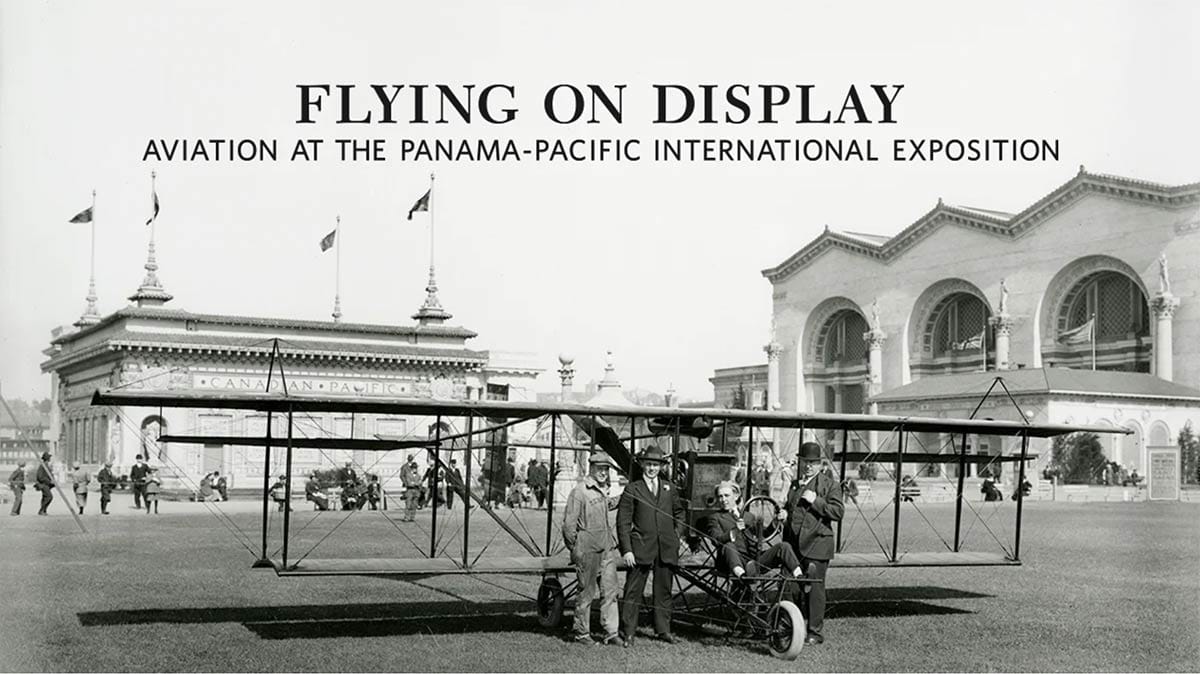
“One of the most exciting new technologies at the fair was the airplane, and daily flying demonstrations thrilled countless spectators,” reads the exhibit text and notes “The exposition also offered passenger-carrying tours by air, giving many their first taste of flight.”
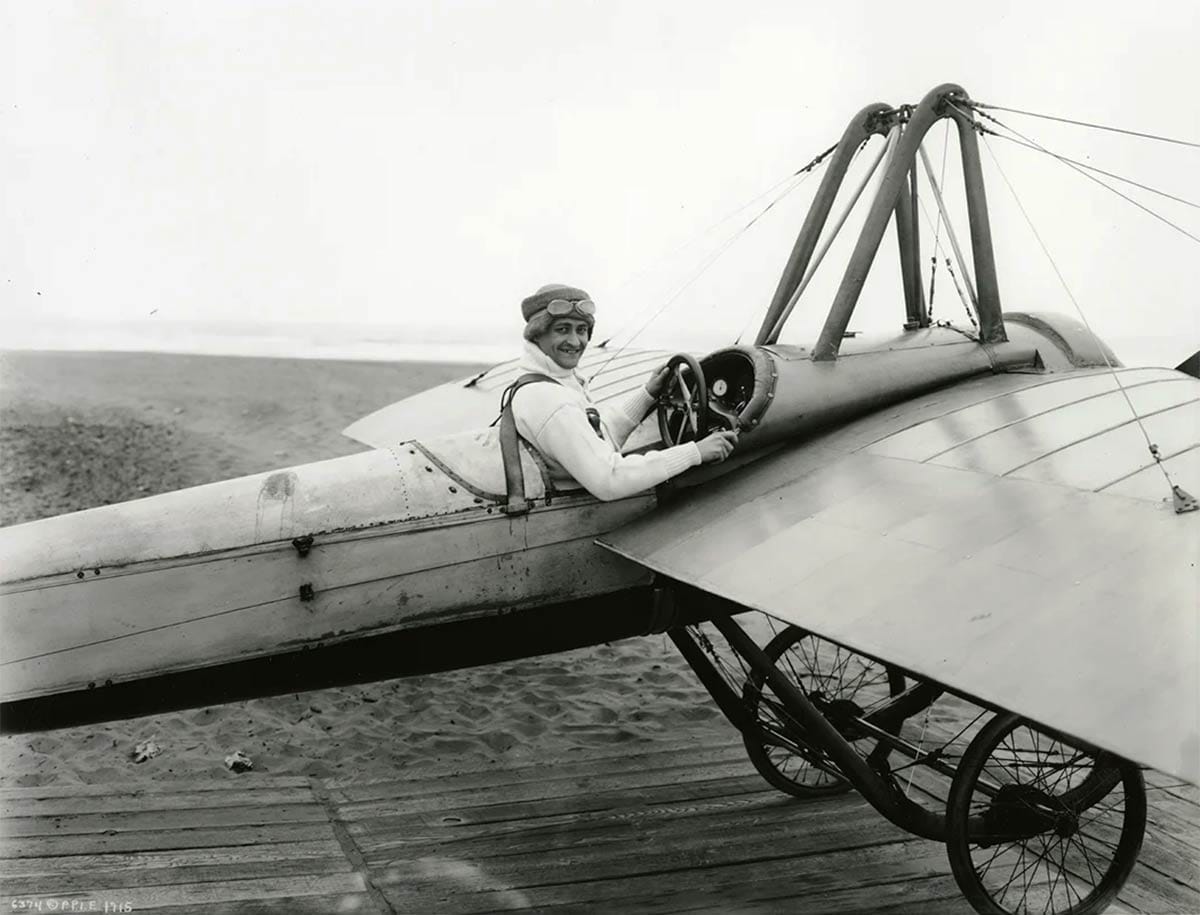
I was excited to see among the prints, created from glass-plate negatives taken by the Cardinell-Vincent Company, a couple of shots from Ocean Beach, where brothers Silas and Harry Christofferson had a hangar and ran a flight school starting in 1914.
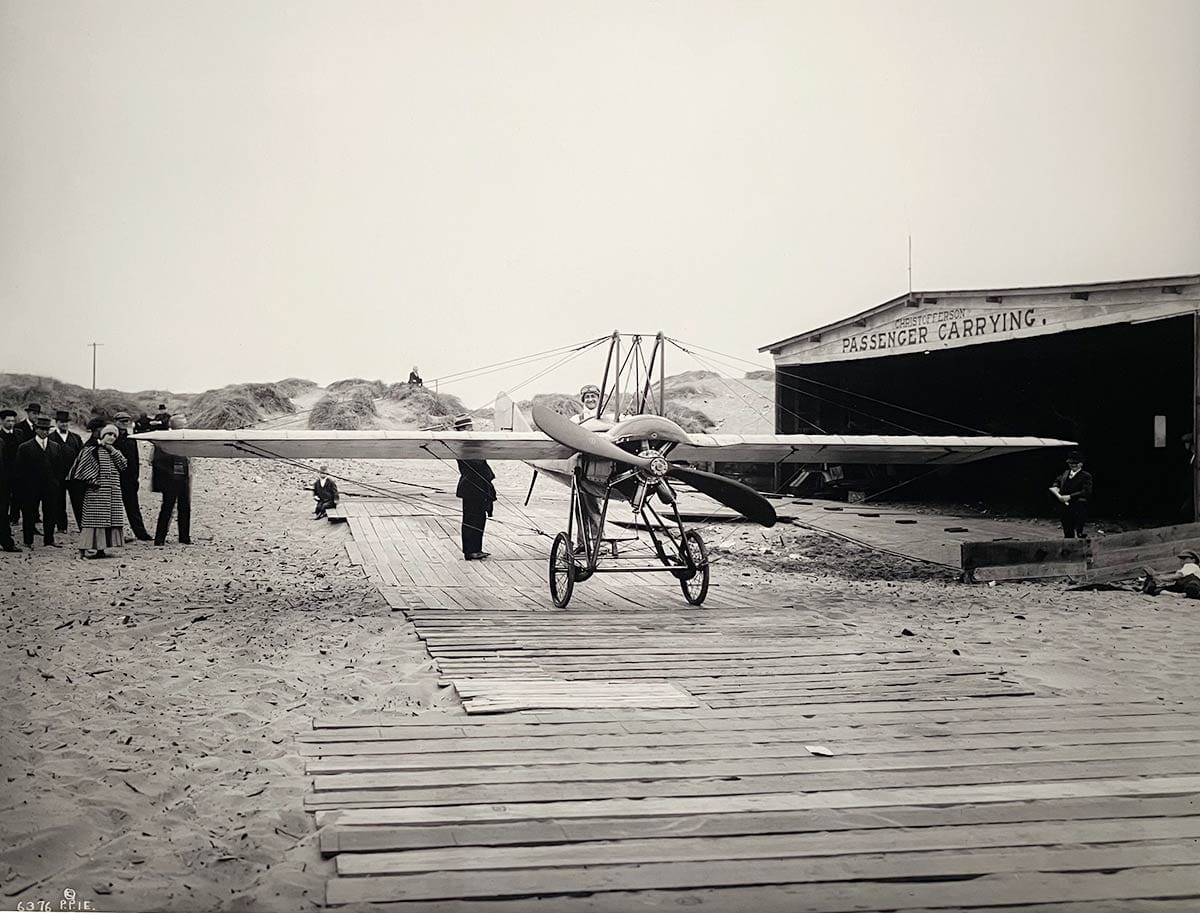
Flying machines were still new and inventive people across the country were making their own. Like automobiles just a decade or so earlier, the first enthusiasts were tinkering bicycle mechanics and rich men looking for their next toy.
Silas Christofferson was known for his record attempts, being the first to get over 15,728-foot-high Mount Whitney and setting a U.S. one-day distance record trying to fly from Ocean Beach to San Diego.
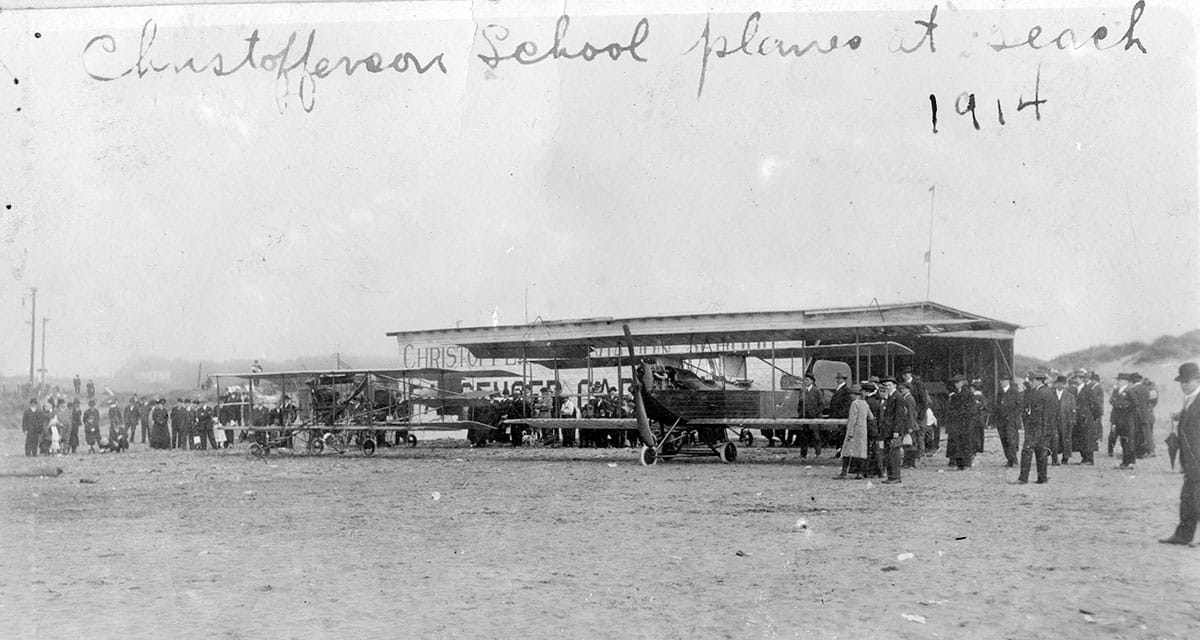
There were a number of Christofferson brothers who got into flying. At the beach school at the foot of Sloat Boulevard Silas and Harry Christofferson taught and did a lot of publicity work to encourage interest in the utility of flying machines.
They’d pretend to miss a train on the peninsula and decide to fly back to the city for a Cliff House appointment. They’d fly city supervisors to neighborhood festivals across town, implying everyone would soon have their own biplane to bop around on errands.
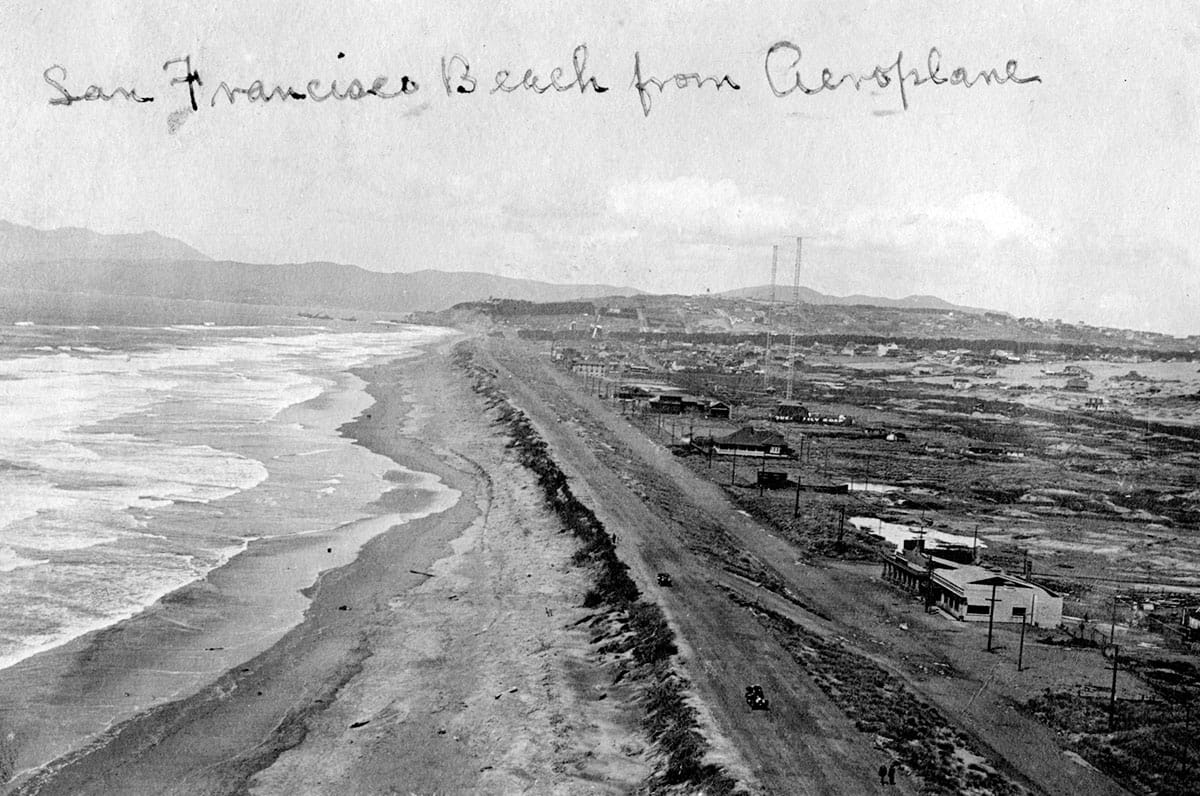
When a small boat sank offshore, Harry flew to the group of struggling men, getting there ahead of the surf patrol, and dropped life-preservers. Despite heroic efforts by all, the men drowned. Christofferson said with a hydroplane they would have been saved and encouraged all beaches to get one.
On July 25, 1914, a big “beach day” was staged to commemorate the construction of the Great Highway (complete with rodeo trick riders… just an idea for those of you activating the new park out there).
Harry flew Alameda’s “sea queen” swimmer Nell Schmidt up and down the beach, landing at points to let her show off in the surf. (Schmidt was well-known for setting a women’s record for swimming the Golden Gate.)
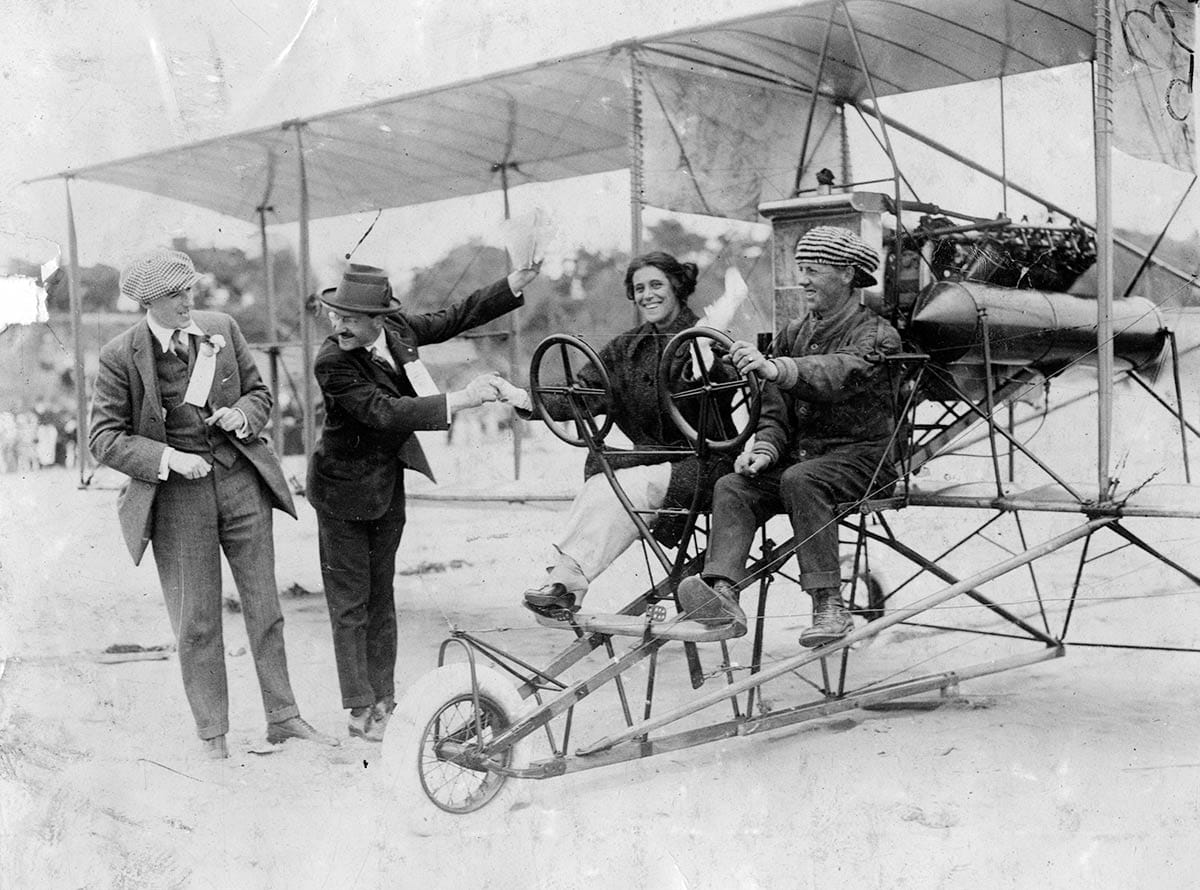
The brothers inaugurated “aerial taxi” service, with Silas flying San Francisco mayor James Rolph, Jr. from Mission wharf to Oakland and back in 25 minutes. That might be a little faster than BART, but it was a stunt more than anything else.
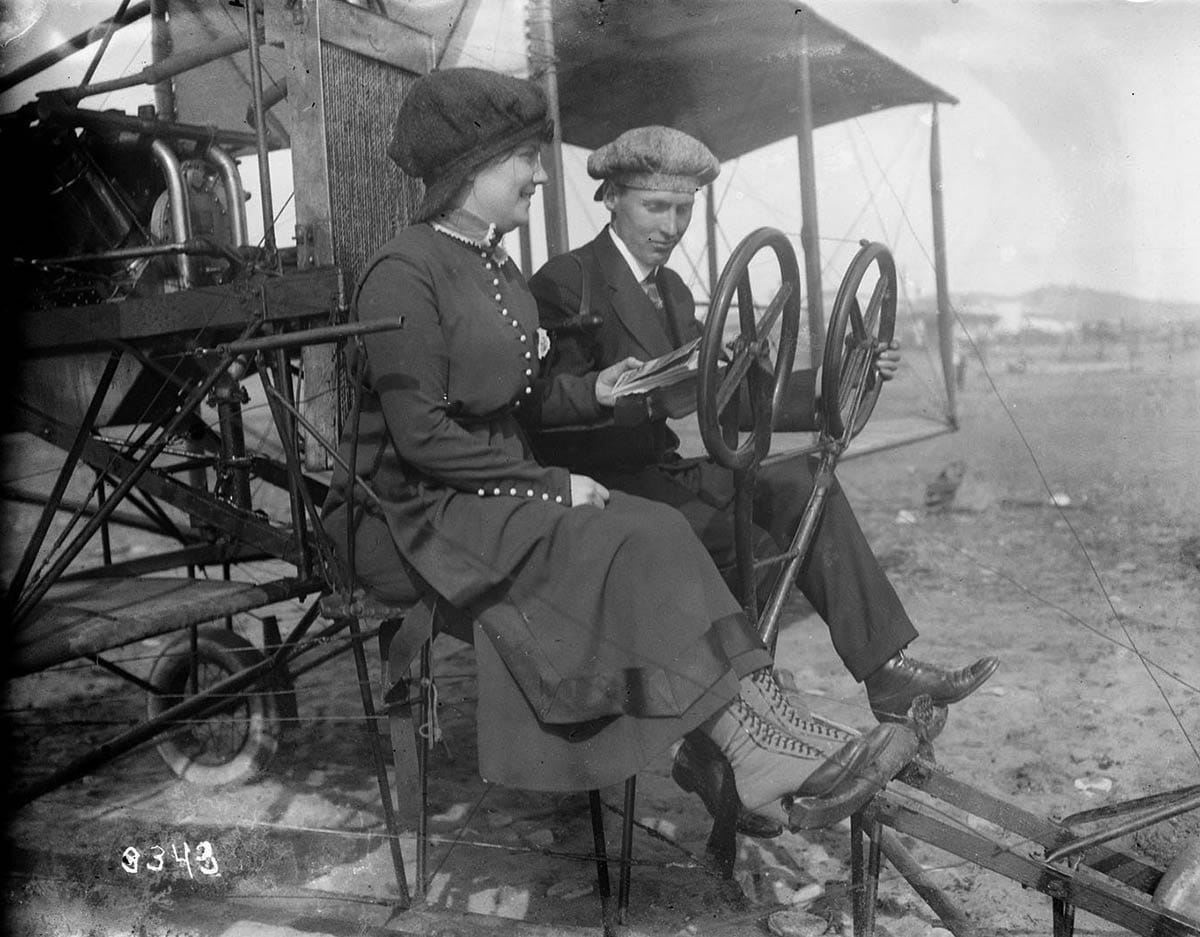
Silas moved his flying school to bigger grounds in Redwood City, but Harry was teaching people at Ocean Beach as late as 1917. One of the students, Lyman Doty, received a lot of attention that year for supposedly spotting a submarine at the Golden Gate. (World War I had folks spooked about German U-Boats.)
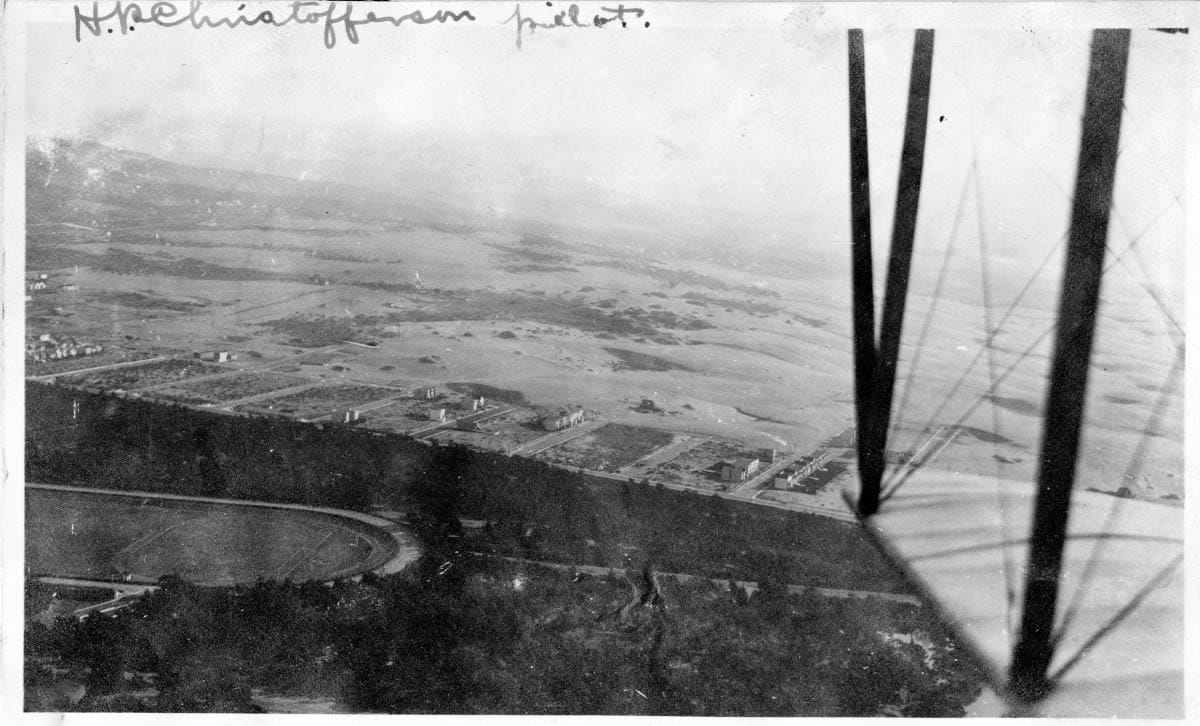
At one point, the brothers had 28 students from five countries learning to fly at Ocean Beach. One recalled his first lesson at the school: “Christofferson started me out with instructions on the handling of the engine and then let me run the machine up and down the beach. He cautioned me not to open the throttle wide, as I must master the ‘feel’ of the machine on the ground before attempting to fly.”
The next day, ahead of schedule and against Christofferson’s instructions, the student was airborne: “Believe me, I was frightened. I wanted to get back on the ground just as quickly as the good Lord would let me. So I pushed the controls forward and felt rather than saw the ground rushing up to meet me. […] At last, in desperation I landed, bumped along the ground and finally stopped with a crash, turning on one side and crumpling up one of the planes.”
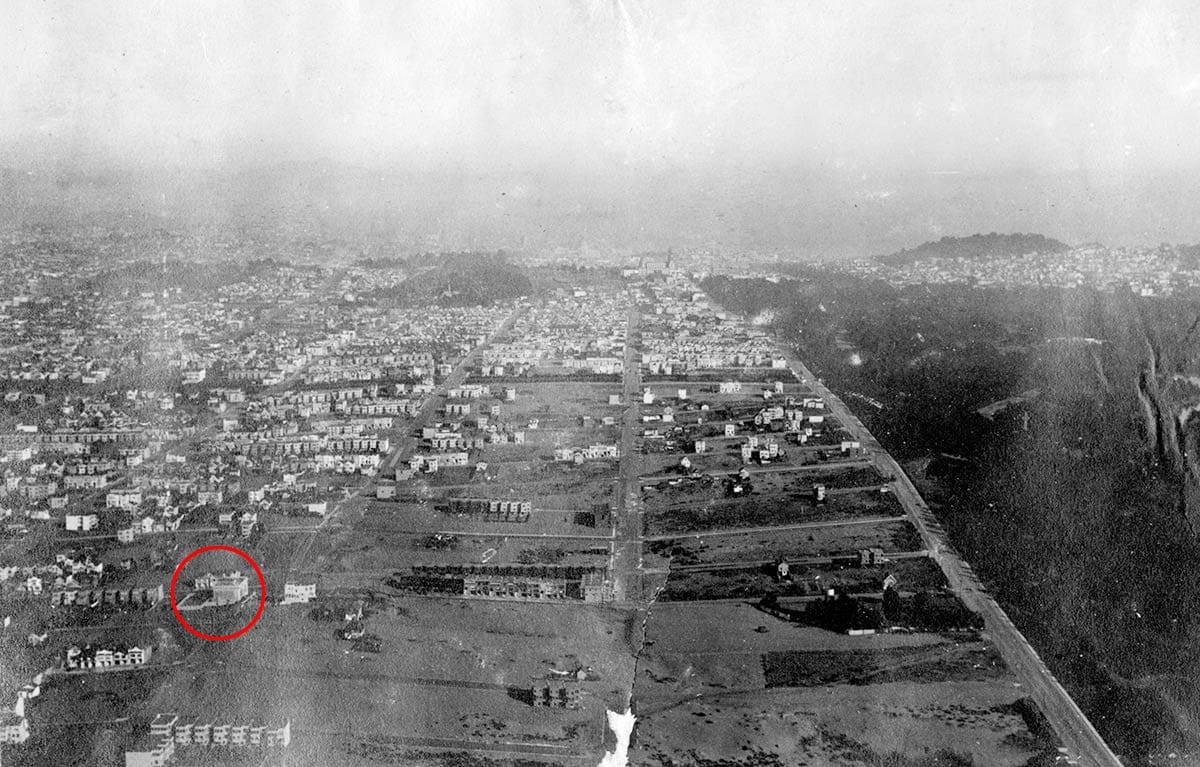
People working at the dawn of a technological innovation often like to style themselves heroes, but there’s a big difference between developing an “AI agent” in your man-cave and flying a thousand feet above Mother Earth.
Of the pilots who showed off and made some cash at the 1915 fair, one died at the PPIE (Lincoln Beachey) and two lost their lives in crashes the next year: Silvio Pettirossi in Buenos Aires and Charles F. Niles in Oshkosh, Wisconsin.
Silas Christofferson also left the air and this world in 1916. Testing a “perfect” biplane of new design, which had already killed one owner, he crashed it at his Redwood City aviation school and died the same day.
Silas and Harry’s younger brother Goodsell, also an aviator, died two years later when a student he was instructing lost control of their plane. Lyman Doty, the Christofferson student who thought he saw a submarine, died in a crash near Baltimore in 1919. The youngest Christofferson brother, Harvey, perished when his plane went into a tail-spin and fell to earth in Yuma, Arizona in 1929.
Harry Christofferson got out of flying and opened an automobile repair shop. He lived to be 84 years old before passing away quietly in 1968.
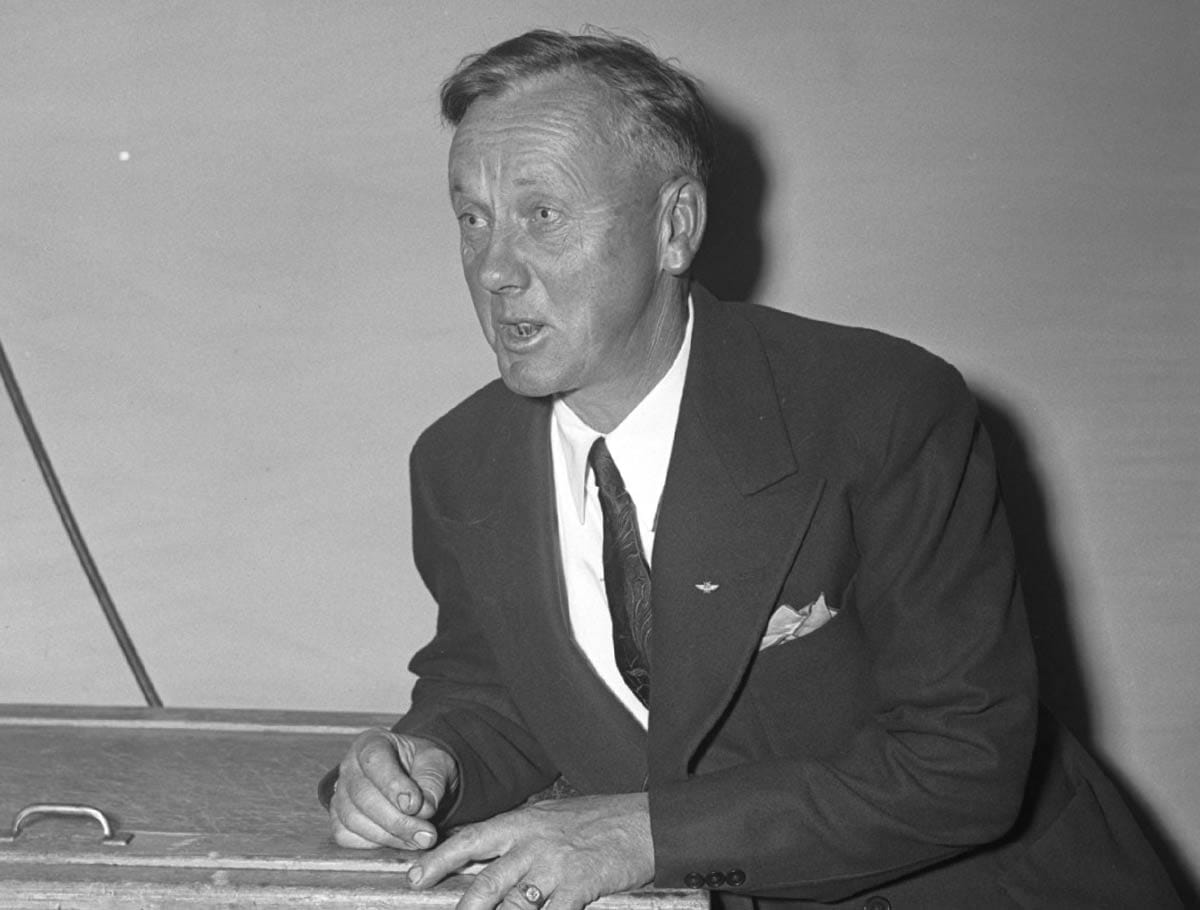
Woody Beer and Coffee Fund
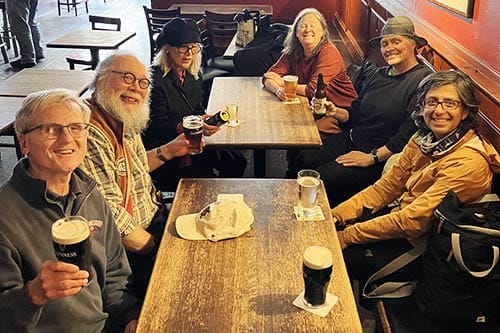
We can have a coffee or a beer or both together (mmm... coffee porter...) The hard part is the scheduling. The easy part is letting me pay because kind readers have already chipped in for us to have a good time. (You can too, if you want.)
When are you free?
Sources
“U.S. Record Shattered by Aviator Flying for San Diego,” San Francisco Examiner, February 10, 1914, pg. 1.
Edgar T. Gleeson, “Beach Day Frolic Draws 125,000 to the Ocean Shore,” San Francisco Bulletin, July 27, 1914, pg. 4.
“‘Kiddies’ Day to be Festive Round of Music and Merriment,” San Francisco Bulletin, September 26, 1914, pg. 2.
“Men Drown at Ocean Beach in Sight of Helpless Crowd,” San Francisco Examiner, April 26, 1915, pg. 2.
“‘Perfect’ Biplane Kills Christofferson,” San Francisco Examiner, November 1, 1916, pg. 3.
“Aviators Miss Train; Fly to Destination,” San Francisco Chronicle, December 15, 1916, pg. 2.
“Samuel Hopkins Family Takes to Air,” San Francisco Bulletin, February 14, 1917, part 2, page. 1.
“Aviator Reports Diver in Harbor; Officers Doubt,” San Francisco Examiner, May 19, 1917, pg. 5.
Guy D. Smith, “The Aerial Crusader,” San Francisco Examiner, January 29, 1919, pg. 11.
“S.F. Flyer is Killed in Plane Afire,” San Francisco Examiner, October 15, 1919, pg. 12.
“Youngest of Noted Family Dies in Wreck,” San Francisco Examiner, May 27, 1929, pg. 1.
“Rites Held for Harry Christofferson, 84, Pioneer in Aviation,” Redwood City Tribune, December 12, 1968, pg. 18.

